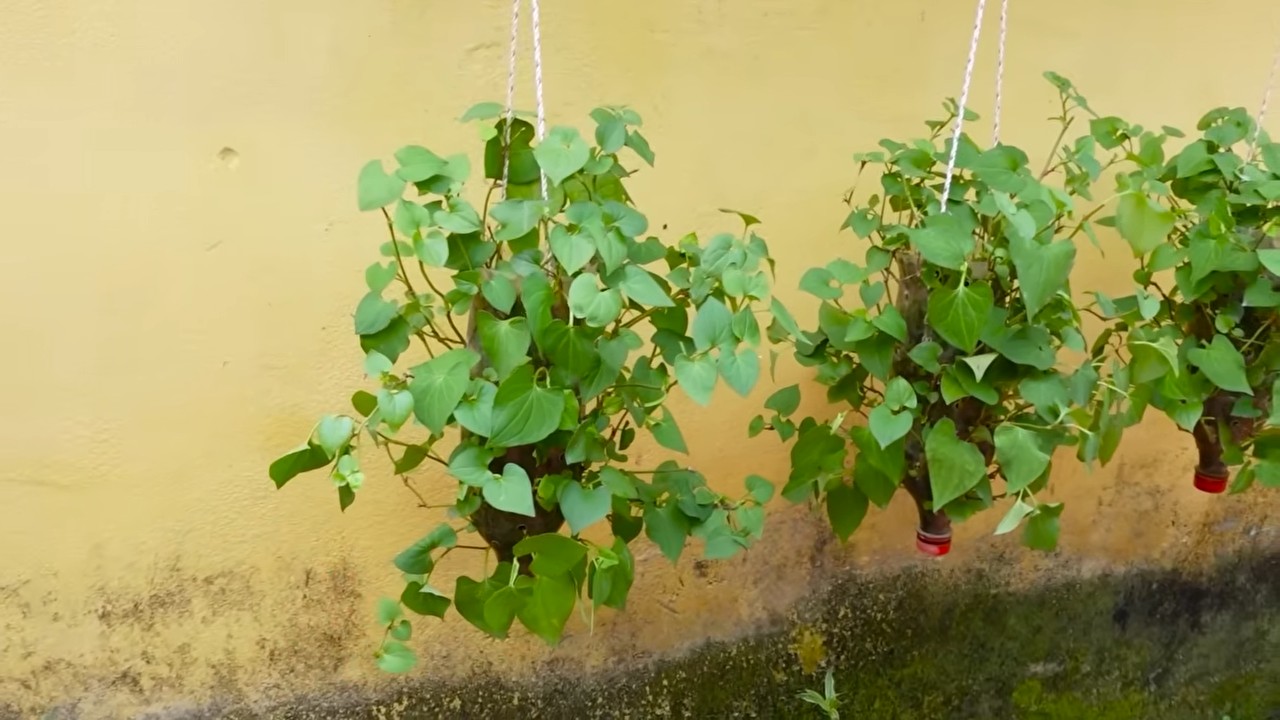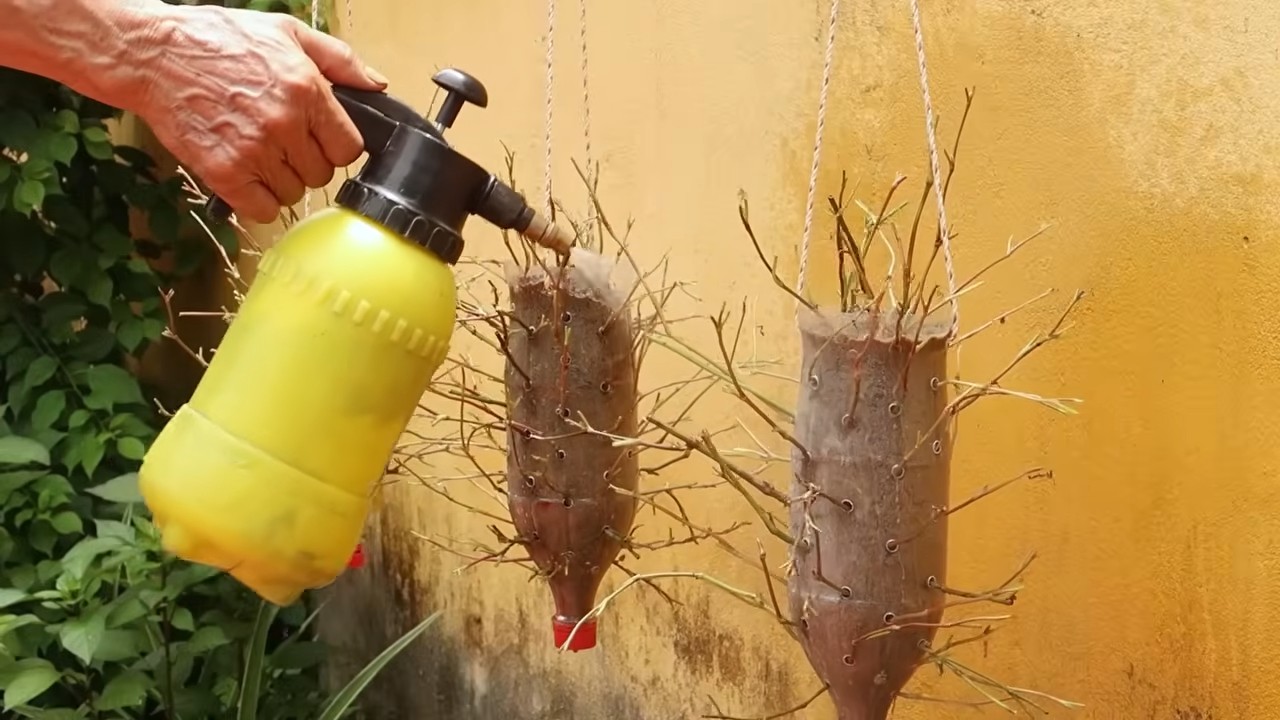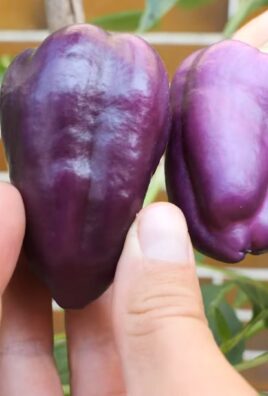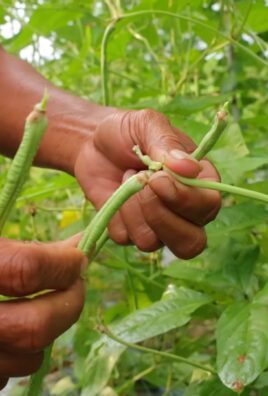Harvesting Fish Mint Daily can feel like a superpower for any home gardener! Imagine stepping outside your door and having a fresh, vibrant herb ready to elevate your meals, soothe minor ailments, or even add a unique touch to your garden’s aesthetic. But let’s be honest, sometimes keeping up with the bounty of our gardens can feel overwhelming, right?
Fish Mint, also known as Houttuynia cordata, boasts a rich history, deeply rooted in Asian cultures where it’s been used for centuries in traditional medicine and cuisine. From Vietnam to China, this herb is celebrated for its purported health benefits and distinctive flavor. But what if I told you that mastering the art of harvesting Fish Mint daily isn’t just about enjoying its benefits, but also about encouraging healthier, more robust growth?
That’s where this DIY guide comes in! We’re diving deep into simple, effective techniques that will transform your Fish Mint patch from a sprawling, sometimes unruly plant into a thriving, productive herb garden. Many people struggle with overgrown or leggy Fish Mint, leading to a less flavorful and less visually appealing plant. This guide will show you how to avoid those pitfalls and unlock the full potential of your Fish Mint. So, grab your gardening gloves, and let’s get started on maximizing your daily harvest!

Fischminze ernten wie ein Profi: Dein DIY-Guide für eine endlose Ernte
Hey Gartenfreunde! Fischminze (Houttuynia cordata) ist eine fantastische Pflanze – sie ist nicht nur superlecker und vielseitig in der Küche, sondern auch unglaublich pflegeleicht. Aber wie erntet man sie richtig, damit sie immer wieder nachwächst und man nie ohne frische Blätter dasteht? Keine Sorge, ich zeige dir, wie’s geht! Dieser Guide ist vollgepackt mit Tipps und Tricks, damit du deine Fischminze optimal nutzen kannst.
Was du für die Fischminze-Ernte brauchst
Bevor wir loslegen, hier eine kleine Checkliste, damit du alles griffbereit hast:
* Eine scharfe Schere oder ein Messer: Stumpfe Werkzeuge können die Pflanze beschädigen.
* Einen Korb oder eine Schüssel: Zum Sammeln der geernteten Blätter.
* (Optional) Gartenhandschuhe: Um deine Hände sauber zu halten.
* (Optional) Eine Gießkanne: Falls die Erde trocken ist.
Wann ist der richtige Zeitpunkt zum Ernten?
Der beste Zeitpunkt zum Ernten ist am Morgen, nachdem der Tau getrocknet ist. Dann sind die Blätter am aromatischsten. Du kannst Fischminze aber grundsätzlich den ganzen Sommer über ernten, solange die Pflanze gesund aussieht. Achte darauf, dass du nicht mehr als ein Drittel der Pflanze auf einmal erntest, damit sie sich gut erholen kann.
Die richtige Erntetechnik: Schritt für Schritt
Jetzt geht’s ans Eingemachte! Hier ist eine detaillierte Anleitung, wie du deine Fischminze richtig erntest:
1. Pflanze inspizieren: Bevor du zur Schere greifst, schau dir deine Fischminze genau an. Sind die Blätter gesund und kräftig grün? Gibt es Anzeichen von Schädlingen oder Krankheiten? Nur gesunde Blätter sollten geerntet werden. Entferne alle gelben oder braunen Blätter, um die Pflanze gesund zu halten.
2. Die richtigen Stängel auswählen: Wähle die längsten und kräftigsten Stängel aus. Diese haben in der Regel die meisten Blätter und sind am aromatischsten. Achte darauf, dass du nicht nur die obersten Blätter erntest, sondern auch etwas tiefer in die Pflanze hineingehst. Das fördert das Wachstum neuer Triebe.
3. Stängel schneiden: Nimm deine scharfe Schere oder dein Messer und schneide die ausgewählten Stängel etwa 5-10 cm über dem Boden ab. Schneide immer direkt über einem Blattknoten (der Stelle, an der ein Blatt aus dem Stängel wächst). Hier werden neue Triebe entstehen.
4. Blätter ernten (optional): Wenn du nur einzelne Blätter benötigst, kannst du diese auch direkt vom Stängel abzupfen. Achte darauf, dass du die Stängel dabei nicht beschädigst.
5. Geerntete Blätter sammeln: Lege die geernteten Blätter in deinen Korb oder deine Schüssel.
6. Pflanze gießen (optional): Wenn die Erde trocken ist, gieße die Pflanze nach der Ernte. Das hilft ihr, sich zu erholen und neue Triebe zu bilden.
7. Regelmäßig ernten: Je öfter du erntest, desto buschiger wird deine Fischminze. Ernte regelmäßig, um eine kontinuierliche Versorgung mit frischen Blättern zu gewährleisten.
Fischminze richtig lagern
Nach der Ernte stellt sich natürlich die Frage: Wie bewahre ich die frischen Blätter am besten auf? Hier sind ein paar Tipps:
* Kurzfristige Lagerung: Wickle die Blätter in ein feuchtes Papiertuch und lege sie in einem Plastikbeutel in den Kühlschrank. So halten sie sich ein paar Tage frisch.
* Längere Lagerung:
* Trocknen: Binde die Stängel zu kleinen Bündeln zusammen und hänge sie kopfüber an einem trockenen, dunklen und gut belüfteten Ort auf. Sobald die Blätter trocken sind, kannst du sie in einem luftdichten Behälter aufbewahren.
* Einfrieren: Hacke die Blätter fein und friere sie in Eiswürfelbehältern mit Wasser oder Öl ein. So hast du immer eine Portion frische Fischminze zur Hand.
Fischminze vermehren: So geht’s!
Wenn du von deiner Fischminze begeistert bist, möchtest du sie vielleicht vermehren. Das ist gar nicht schwer! Hier sind zwei einfache Methoden:
Stecklinge ziehen
1. Stecklinge schneiden: Schneide im Frühjahr oder Sommer etwa 10-15 cm lange Stecklinge von gesunden Trieben. Entferne die unteren Blätter, sodass nur noch die oberen Blätter übrig bleiben.
2. Stecklinge bewurzeln: Stelle die Stecklinge in ein Glas Wasser. Achte darauf, dass die Blätter nicht im Wasser sind, da sie sonst faulen können. Stelle das Glas an einen hellen, aber nicht direkten Sonnenplatz.
3. Einpflanzen: Sobald die Stecklinge Wurzeln gebildet haben (das dauert in der Regel 2-3 Wochen), kannst du sie in Töpfe mit Erde pflanzen.
Teilung
1. Pflanze ausgraben: Grabe im Frühjahr oder Herbst die Fischminze vorsichtig aus.
2. Teilen: Teile den Wurzelballen mit einem scharfen Messer oder einer Schere in mehrere Teile. Achte darauf, dass jeder Teil genügend Wurzeln und Triebe hat.
3. Einpflanzen: Pflanze die geteilten Pflanzen in separate Töpfe oder direkt ins Beet.
Häufige Probleme und Lösungen
Auch bei der Fischminze-Ernte können mal Probleme auftreten. Hier sind ein paar häufige Probleme und wie du sie lösen kannst:
* Gelbe Blätter: Gelbe Blätter können ein Zeichen für Überwässerung, Nährstoffmangel oder Krankheiten sein. Achte darauf, dass die Erde gut durchlässig ist und dünge die Pflanze regelmäßig. Entferne die gelben Blätter, um die Ausbreitung von Krankheiten zu verhindern.
* Schädlinge: Fischminze kann von Blattläusen oder Spinnmilben befallen werden. Sprühe die Pflanze mit einem natürlichen Insektizid oder einer Seifenlösung ein.
* Wenig Wachstum: Wenn deine Fischminze nicht gut wächst, kann das an zu wenig Licht, Nährstoffmangel oder falscher Erde liegen. Stelle die Pflanze an einen helleren Standort, dünge sie regelmäßig und verwende eine hochwertige Erde.
Fischminze in der Küche: Inspirationen
Fischminze ist unglaublich vielseitig in der Küche. Hier sind ein paar Ideen, wie du sie verwenden kannst:
* Salate: Füge frische Fischminze zu Salaten hinzu, um ihnen eine besondere Note zu verleihen.
* Suppen: Verwende Fischminze als Garnitur für Suppen oder als Zutat in Brühen.
* Sommerrollen: Fischminze ist ein Muss in vietnamesischen Sommerrollen.
* Tees: Bereite einen erfrischenden Tee aus frischen oder getrockneten Fischminzeblättern zu.
* Wok-Gerichte: Füge Fischminze zu Wok-Gerichten hinzu, um ihnen einen frischen Geschmack zu verleihen.
* Dips und Saucen: Hacke Fischminze fein und verwende sie in Dips und Saucen.
Zusätzliche Tipps für eine reiche Ernte
* Regelmäßig düngen: Fischminze ist ein Starkzehrer. Dünge sie regelmäßig mit einem organischen Dünger, um ein gesundes Wachstum zu fördern.
* Rückschnitt: Schneide die Pflanze regelmäßig zurück, um ein buschiges Wachstum zu fördern und die Bildung neuer Triebe anzuregen.
* Sonnenschutz: In heißen Sommern kann es sinnvoll sein, die Fischminze vor direkter Sonneneinstrahlung zu schützen, um Verbrennungen der Blätter zu vermeiden.
* Überwinterung: Fischminze ist winterhart, kann aber in sehr kalten Regionen etwas Schutz gebrauchen. Decke die Pflanze mit Laub oder Reisig ab, um sie vor Frost zu schützen.
Ich hoffe, dieser Guide hilft dir dabei, deine Fischminze optimal zu ernten und zu nutzen. Viel Spaß beim Gärtnern und Kochen!

Conclusion
So, there you have it! Harvesting your own fish mint daily isn’t just a way to ensure a constant supply of this unique and flavorful herb; it’s a gateway to a more vibrant and sustainable culinary experience. We’ve explored the simple yet effective techniques that allow you to enjoy the freshest fish mint possible, maximizing its distinctive taste and aroma in your favorite dishes.
Think about it: no more wilted, store-bought herbs that lack that characteristic zing. Instead, you’ll have a thriving plant right at your fingertips, ready to contribute its peppery, slightly citrusy notes to your salads, soups, stir-fries, and more. The difference in flavor is truly remarkable, and once you’ve tasted freshly harvested fish mint, you’ll never want to go back.
But the benefits extend beyond just taste. By harvesting daily, you’re actively encouraging your fish mint plant to grow and flourish. Regular trimming promotes bushier growth, leading to a more abundant harvest in the long run. It’s a win-win situation: you get a steady supply of fresh herbs, and your plant thrives under your care.
Don’t be afraid to experiment with different harvesting techniques. Try pinching off the tips of the stems for a more delicate flavor, or harvest larger leaves for a bolder, more intense taste. You can even dry some of your harvest for later use, preserving the unique flavor of fish mint for those times when your plant needs a little rest. Consider propagating cuttings to expand your fish mint patch and share the bounty with friends and family. Imagine the joy of gifting someone a thriving fish mint plant, allowing them to experience the same culinary delight that you’ve discovered.
This simple DIY trick is a game-changer for any home cook who appreciates fresh, flavorful ingredients. It’s easy, rewarding, and sustainable. And the best part? It connects you to your food in a more meaningful way, allowing you to appreciate the journey from garden to table.
We wholeheartedly encourage you to give this a try. Start small, with just a few plants, and see for yourself the difference that daily harvesting can make. Once you’ve experienced the joy of fresh, homegrown fish mint, you’ll be hooked!
And most importantly, we want to hear about your experience! Share your tips, tricks, and favorite fish mint recipes in the comments below. Let’s create a community of fish mint enthusiasts, sharing our knowledge and inspiring each other to grow and cook with this amazing herb. What dishes have you elevated with your freshly harvested fish mint? What challenges did you encounter, and how did you overcome them? Your insights could be invaluable to other readers who are just starting out. So, don’t be shy – share your fish mint story with the world!
Frequently Asked Questions (FAQ)
What is the best time of day to harvest fish mint?
The best time to harvest fish mint is generally in the morning, after the dew has dried but before the heat of the day sets in. This is when the plant’s essential oils are most concentrated, resulting in the most flavorful harvest. However, you can harvest fish mint at any time of day, especially if you’re harvesting it for immediate use. Just be mindful that the flavor might be slightly less intense if you harvest during the hottest part of the day.
How much fish mint can I harvest at once?
You can harvest up to one-third of the plant at a time without harming it. Avoid taking too much from any single stem, as this can stunt its growth. Focus on harvesting the outer leaves and stems, allowing the inner leaves to continue to grow. Regular, light harvesting is better than infrequent, heavy harvesting. This encourages the plant to produce new growth and maintain a bushy shape.
What is the best way to store harvested fish mint?
For short-term storage (1-2 days), wrap the harvested fish mint in a damp paper towel and store it in a plastic bag in the refrigerator. For longer-term storage, you can dry the fish mint. To dry it, hang the stems upside down in a cool, dark, and well-ventilated place. Alternatively, you can use a dehydrator. Once dried, store the fish mint in an airtight container in a cool, dark place. You can also freeze fish mint. Chop the leaves and freeze them in ice cube trays with water or oil. Once frozen, transfer the cubes to a freezer bag.
How do I encourage my fish mint plant to grow bushier?
Regular harvesting is the key to encouraging bushier growth. Each time you pinch off a stem, the plant will produce two new stems from the nodes below the cut. This process, known as “pinching back,” promotes branching and results in a fuller, more productive plant. You can also fertilize your fish mint plant with a balanced fertilizer to provide it with the nutrients it needs to thrive.
My fish mint plant is spreading aggressively. How can I control it?
Fish mint is known for its aggressive spreading habit. To control its spread, grow it in a container or raised bed. If you’re growing it in the ground, consider using a barrier to prevent the roots from spreading. You can also regularly trim back the plant to prevent it from taking over your garden. Be vigilant about removing any runners that pop up outside of your desired growing area.
Can I grow fish mint indoors?
Yes, you can grow fish mint indoors, but it requires bright light. Place it near a sunny window or under grow lights. Ensure the pot has good drainage and water regularly, allowing the soil to dry slightly between waterings. Indoor-grown fish mint may not be as vigorous as outdoor-grown fish mint, but you can still enjoy a decent harvest.
What are some common uses for fish mint in cooking?
Fish mint is a versatile herb that can be used in a variety of dishes. It’s commonly used in Southeast Asian cuisine, particularly in Vietnamese and Thai dishes. It can be added to salads, soups, stir-fries, spring rolls, and noodle dishes. It can also be used to make a refreshing tea. Its unique flavor pairs well with seafood, poultry, and vegetables. Experiment with different recipes to discover your favorite ways to use fish mint.
Is fish mint safe to eat?
Fish mint is generally considered safe to eat for most people. However, some people may be allergic to it. If you’ve never eaten fish mint before, start with a small amount to see how your body reacts. If you experience any allergic symptoms, such as itching, swelling, or difficulty breathing, discontinue use and consult a doctor. Pregnant or breastfeeding women should consult with their doctor before consuming fish mint.
What are the health benefits of fish mint?
Fish mint is believed to have several health benefits, including anti-inflammatory, antibacterial, and antiviral properties. It’s also a good source of antioxidants. Some studies suggest that fish mint may help to boost the immune system, improve digestion, and reduce inflammation. However, more research is needed to confirm these benefits.
How often should I water my fish mint plant?
Water your fish mint plant regularly, especially during hot and dry weather. The soil should be kept consistently moist, but not waterlogged. Check the soil moisture regularly and water when the top inch of soil feels dry to the touch. Overwatering can lead to root rot, so ensure the pot has good drainage.




Leave a Comment